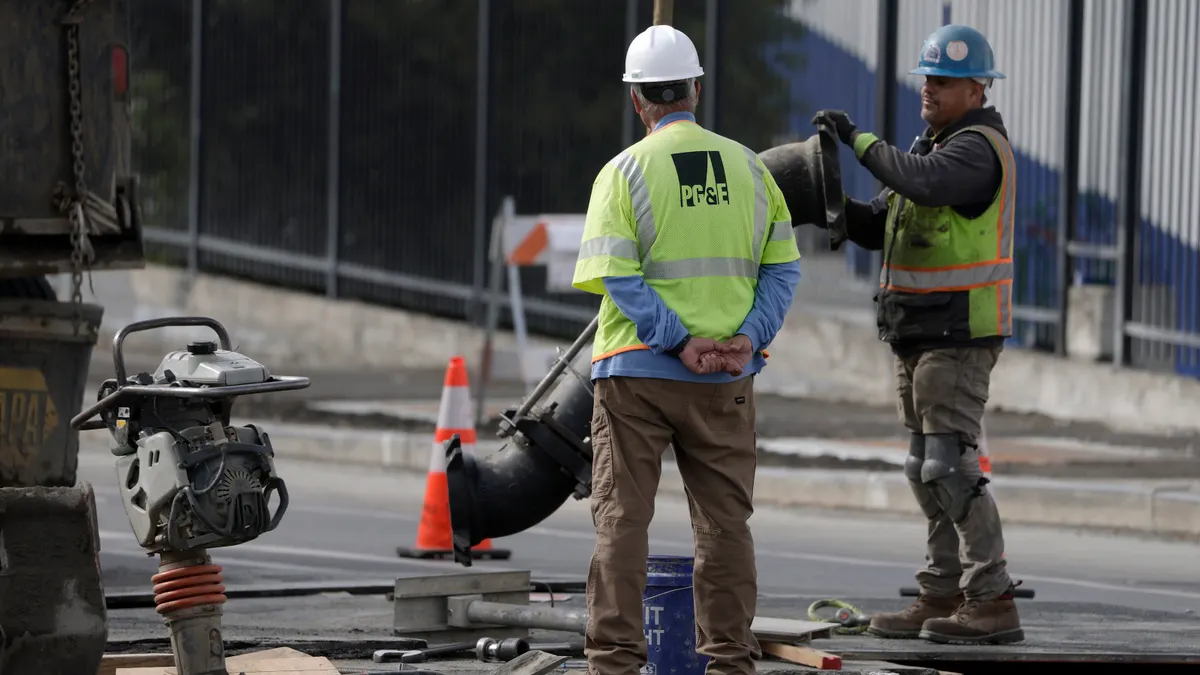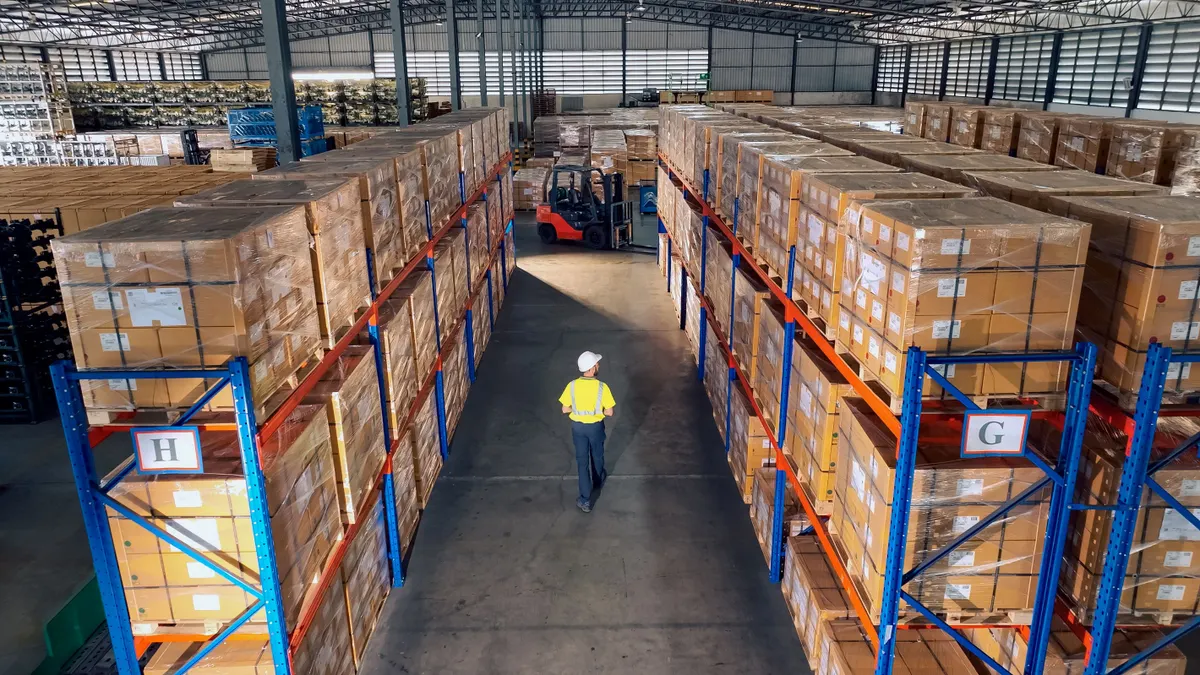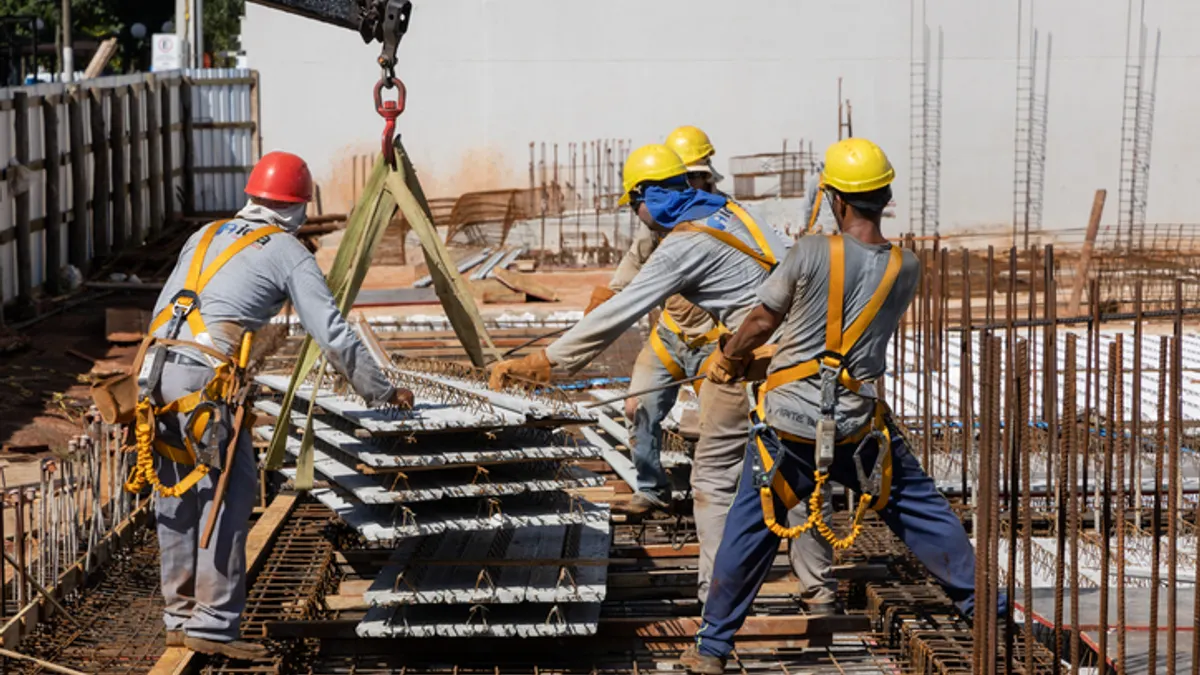John Mielke started his career as apprenticeship coordinator for Associated Builders and Contractors in Wisconsin.
Now, after 32 years with the group’s Badger State chapter, including 12 years as president, Mielke is once again turning to promoting apprenticeships, but on a national scale. ABC named Mielke the senior director of apprenticeship on Oct. 7.
The appointment comes at a time when construction’s high demand for skilled trades continues to be a thorn in contractors’ sides, especially as they seek to deliver on a historic amount of infrastructure work.
Here, Mielke talks with Construction Dive about the value of registered apprenticeships, plans for the future and his view of the emerging workforce.
The following has been edited for brevity and clarity.
CONSTRUCTION DIVE: What does this new role at ABC National look like for you?

JOHN MIELKE: I think the first step is going to be for me to get my arms around exactly what the chapters are doing. I think the chapters are laboratories for innovation on all kinds of fronts, and everybody's doing something a little bit differently. My first task will just be to get to know their training programs better and see where I can help.
They're almost exclusively merit shop programs. There are a few chapters where the ABC and the Associated General Contractors of America chapters are kind of combined, and they might have a different setup, but the vast majority of those apprenticeship programs are merit shop programs.
And I think the number is around 450 different programs at those chapters’ registered apprenticeship programs. There's a lot more other craft training programs out there too.
What are the pain points making it harder to get people into apprenticeships now?
We have a skilled labor shortage, with people retiring out of the trades and in trying to make sure that it's an attractive career for younger people, we get this kind of crunch. I think the average age of a construction worker in the United States is 42. When we did our workforce development survey, we found that 58% of our members reported their labor shortage as severe or very severe. We don't have enough people to fill the jobs to get the work done on the books.
The number of people in construction who are under the age of 25 continues to grow. In the Wisconsin chapter a few years ago, the average age of an apprentice was 28, now it's 25. So that number's moving a little bit. But it's a lot of work with the schools and high schools, even in some cases middle schools with promoting careers in construction. And I think actually we're turning the corner.
A number of years ago, maybe that career in construction was seen as a second choice. I don't think that's true anymore. I think a lot of people are seeing it as a first choice because of the high earning potential, the job security, the job satisfaction.
Anecdotally, my son went to college for four years, started his job in the working world and then decided he wanted to be a plumbing apprentice. So he's actually in the plumbing apprenticeship program. I think we see a lot of that.
People who went to college thinking that that was the path to success, they learned that maybe it's not the path that they thought it was or the path that they wanted, and they found an opportunity for entering the apprenticeship program. It would be better if we could catch them earlier.
This new generation of workers has a reputation for having a different attitude around work. Is that true? How so?
Yeah, I think it's different. I mean, every generation is different or views work differently, but I think it's a mistake if people assume that members of the younger generation don't want to work. That's not been our experience.
I think a lot of people who enter the trades are drawn by the job satisfaction and the tangible nature of the work, and knowing at the end of the day that you've got something done and you can see your work and your progress and it's real work. It's not some kind of pseudo-work.
Some of us spend days pushing around paper and checking to-do items. And I think that's an appeal for a lot of people to see the real-life fruits of their labor.
What’s the solution to getting more people into registered apprenticeships?
I think the solution is really three things. We need to continue to recruit younger generations. We need to diversify the labor force and reach out to populations that are historically underrepresented and we need multiple on-ramps to get into the industry.
Last year ABC members spent $1.6 billion educating our workforce. So they're committed to training and they're committed to education. The programs are there. Our chapters offer about 800 different craft training and educational programs, including about 450 government registered apprenticeship programs.
We spend a lot of time reaching out to women and minorities. Veterans can also be a key component of that workforce for sure. Reentering citizens, I know a number of our chapters are working with folks reentering the workforce. We just really need to be looking everywhere where we can find people.
What makes registered apprenticeships a good option for growing the workforce?
I think it's the ultimate earn-while-you-learn model. You can learn a trade that leads to a career in construction, and you're paid to do that. I also think that the apprenticeship program is a proven way to recruit and retain workers. So that's another aspect that's good for the employer.
When you can show an apprentice that at the end of the day they're going to have a portable credential that's recognized and either provided to them by the federal government or the state government, depending on what state you're in, and people will recognize that credential, that's a great way to retain and recruit workers.
And if it's done correctly, apprenticeships can be a great way to recruit women and minorities to the trades. And by correctly, I mean, the nature of apprenticeship is that you have a mentor who is teaching you the trade.
If you have a mentor who's also making sure that person is getting the other things that they need in addition to technical training, the other kinds of support on the jobsite, that can be a great way to recruit somebody who was hesitant to get in the trades for one reason or another.






















